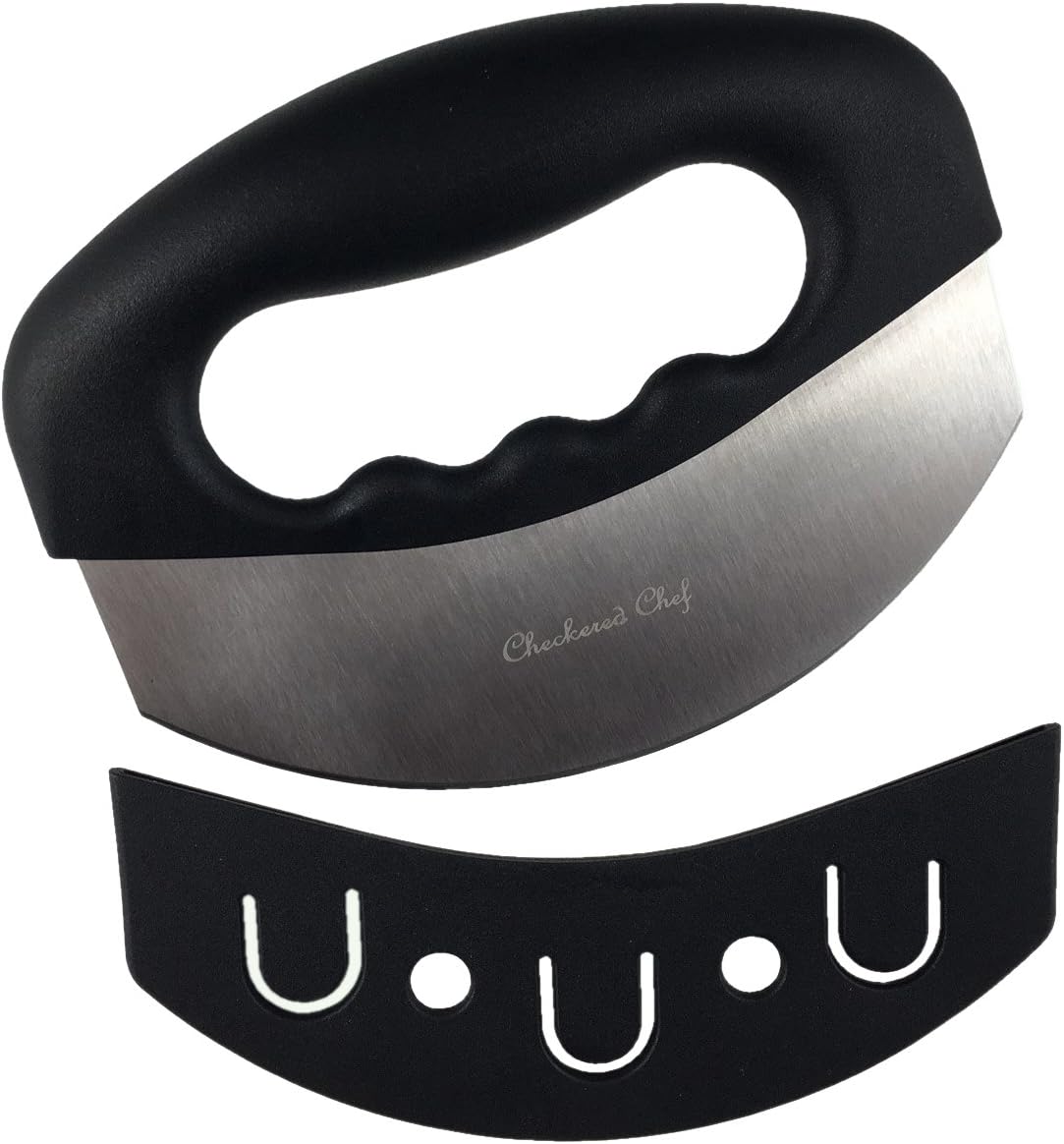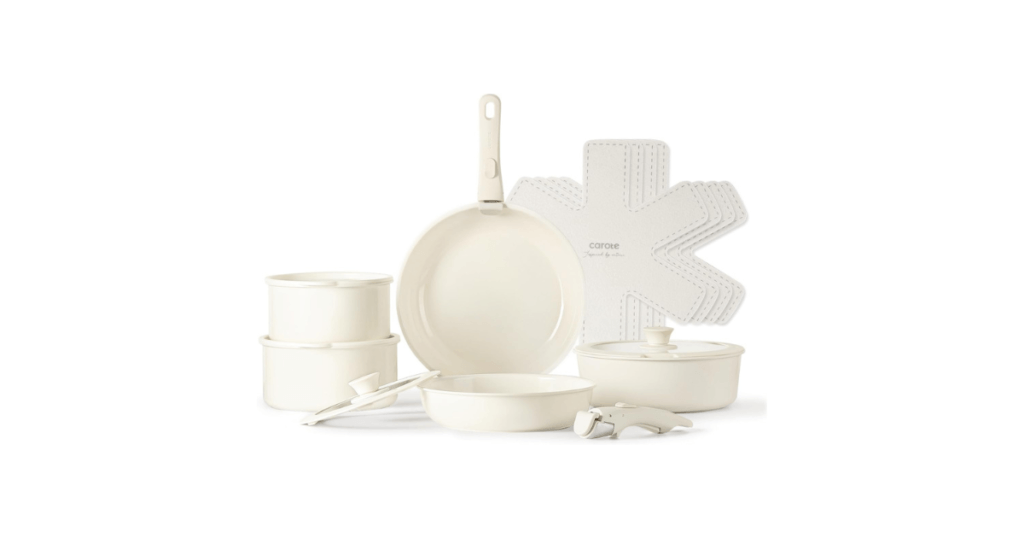Navigating the kitchen can be challenging for individuals with limited mobility or dexterity. Whether you’re a seasoned chef or someone just starting to explore cooking, having the right tools can make a difference.
In this roundup, we’ve curated a selection of the best adaptive kitchen equipment designed to enhance independence, safety, and ease of use in the kitchen. From the Etac Deluxe Plastic One-Handed Kitchen Paring Board to the Checkered Chef Mezzaluna Knife and the Kitchen Mama Auto Electric Can Opener, these products are tailored to meet the unique needs of every user, ensuring that cooking remains a joyful and accessible experience for all.
This is just a taste of more posts about adaptive kitchen equipment, so stay tuned for even more tips, tools, and reviews to help make your kitchen more inclusive and functional.
Best Adaptive Kitchen Equipment
Here are the top choices for adaptive kitchen equipment. These products can help make cooking more accessible and more enjoyable for everyone.
 | The Wright Stuff Deluxe Plastic One-Handed Kitchen Paring Board | $79.05 |
 | Checkered Chef Mezzaluna Knife | $15.99 |
 | Kitchen Mama Auto Electric Can Opener | $29.99 |
Etac Deluxe One-Handed Paring Board
The Etac Deluxe Plastic One-Handed Kitchen Paring Board is a versatile and adaptive kitchen tool designed to aid individuals with limited hand function. Ideal for both right and left-handed users, this paring board provides a stable surface for cutting, slicing, and preparing food with ease. Its non-slip design and practical features make it an essential addition to any adaptive kitchen setup.
Key Features
- One-Handed Use: Specifically designed for individuals with limited hand function, allowing for easy food preparation using only one hand.
- Non-Slip Surface: Features a non-slip base to ensure stability and safety during use.
- Multi-Functional: It has prongs to secure food items and a corner lip to keep bread or similar items in place while slicing.
- Durable Construction: Made from high-quality plastic, ensuring durability and long-lasting use.
- Universal Design: Suitable for right- or left-handed users, accommodating various needs and preferences.
- Compact Size: Measuring 12 inches in length and 11 inches in width, it fits comfortably on most countertops without taking up too much space.
Pros And Cons
Pros
- Plastic prongs firmly hold food
- Sturdy vise to secure bowls or jars
- Suction feet keep the board steady
Cons
- It may be hard to remove from the counter.
- Suction cup screws might strip over time
- Price may seem high for some
Checkered Chef Mezzaluna Knife
The Checkered Chef Mezzaluna Knife is a versatile kitchen tool that combines the functions of a rocker knife, mincing knife, and mezzaluna chopper. Designed with a single, sharp blade and an ergonomic handle, this knife makes chopping and mincing tasks quick and effortless. Ideal for individuals with disabilities or limited hand strength, the rocking motion of the mezzaluna knife reduces strain on the hands and wrists. It has a protective cover/sheath for safe storage, making it an essential addition to any adaptive kitchen.
Key Features
- Multi-Purpose Use: Functions as a rocker knife, mincing knife, and mezzaluna chopper, suitable for various chopping and mincing tasks.
- Ergonomic Design: Features a comfortable handle that allows for an easy rocking motion, reducing hand fatigue, which is especially beneficial for individuals with disabilities or limited hand strength.
- Sharp Stainless Steel Blade: Ensures precise and efficient cutting, perfect for vegetables, herbs, and salads.
- Protective Cover/Sheath: Includes a cover for safe storage and handling, protecting the blade and the user.
- Durable Construction: Made from high-quality materials, ensuring long-lasting performance and durability.
- Easy to Clean: The dishwasher is safe for convenient cleaning and maintenance.
Pros
- Effortless chopping with a rocking motion
- Comfortable handle design
- Dishwasher safe for easy cleaning
Cons
- It might feel bulky to some users.
- Not highly sharp out of the box
- Curved blades can be stiff to sharpen
Kitchen Mama Auto Electric Can Opener
The Kitchen Mama Auto Electric Can Opener is a revolutionary kitchen tool designed to simplify the process of opening cans. With a simple button press, this automatic, hands-free can opener makes opening cans effortless and smooth. It is perfect for individuals with disabilities, arthritis, or limited hand strength, offering a convenient and safe way to handle food preparation. Battery-operated and designed to leave smooth, safe edges, this can opener is a must-have for any adaptive kitchen.
Key Features
- One-Touch Operation: Opens cans with a simple button, making it easy for individuals with limited hand strength or dexterity.
- Automatic and Hands-Free: Once activated, it operates automatically, providing a hands-free experience.
- Smooth Edge Technology: This technology leaves smooth and safe edges on the can and lid, reducing the risk of cuts.
- Food-Safe: Designed with food safety in mind, ensuring no contact with the food inside the can.
- Battery Operated: Powered by batteries, eliminating the need for manual effort or power cords.
- Compact and Portable: Lightweight and easy to store, making it convenient for any kitchen space.
Pros And Cons
Pros
- Effortless can opening at the push of a button
- Safe edges with no sharp cuts
- Lightweight and user-friendly design
Cons
- Batteries not included
- It can be slow during operation.
- Some units may have initial issues.
Buying Guide
When selecting adaptive kitchen equipment, consider your specific needs. Think about what tasks are challenging for you.
Key Features to Look For:
- Ease of Use: Look for equipment with simple instructions and minimal effort required.
- Safety: Ensure items are designed to prevent injury.
- Adjustability: Tools that can be adjusted to your comfort are ideal.
- Durability: Items should be long-lasting and made from high-quality materials.
Examples of Common Adaptive Equipment:
Knives: Choose ones with ergonomic handles and safety features.
Cutting Boards: Non-slip surfaces and built-in holders can make a difference.
| Equipment | Features to Consider |
|---|---|
| Knives | Ergonomic handles, safety lock |
| Cutting Boards | Non-slip, built-in holders |
| Openers | Easy-grip design, minimal force |
Budget Considerations:
Adaptive equipment can vary in price. Determine your budget before shopping. Sometimes, spending a bit more can result in better quality and longevity.
Seek User Reviews:
Read reviews from other users with similar needs. Their experiences can provide insight into the product’s reliability and effectiveness.
Consult Professionals:
Occupational therapists can offer valuable advice on the best equipment for your needs. Don’t hesitate to ask for their recommendations.
How We Picked
Adaptive kitchen equipment is designed to make cooking and meal preparation easier for individuals with physical limitations, ensuring everyone can enjoy the culinary experience.
These tools often feature ergonomic designs, easy-to-use mechanisms, and enhanced safety features tailored to accommodate various needs.
In our selection process, we chose the Etac Deluxe Plastic One-Handed Kitchen Paring Board, the Checkered Chef Mezzaluna Knife, and the Kitchen Mama Auto Electric Can Opener. We prioritized items that enhance accessibility and maintain high standards of quality and practicality.
Each product was picked based on user reviews, expert recommendations, and overall functionality and durability, ensuring they meet the diverse needs of our readers.
The Etac Deluxe Plastic One-Handed Kitchen Paring Board is perfect for individuals with difficulty using both hands. Its non-slip base and sturdy clamps securely hold fruits, vegetables, and bread, allowing for safe and efficient one-handed cutting and peeling. The spiked area also aids in securing food items, making it a versatile tool in any adaptive kitchen.
The Checkered Chef Mezzaluna Knife offers a unique, ergonomic design that simplifies chopping and mincing with a gentle rocking motion. Ideal for those with limited hand strength or arthritis, its double handles provide excellent control and reduce strain. The stainless steel blade ensures durability and sharpness, making meal preparation quicker and more enjoyable.
The Kitchen Mama Auto Electric Can Opener is a game-changer for those with limited hand mobility. With just a button, this device effortlessly opens cans, eliminating the need for manual twisting and turning. Its compact and cordless design makes it easy to store and use, while the smooth edge it leaves behind ensures safety and convenience in the kitchen.
Why Trust Me
Why trust me? As a caretaker for my dad for five years, I understand firsthand the challenges and importance of adaptive kitchen equipment.
My experience has given me a deep appreciation for tools that can make everyday tasks easier and safer for those with physical limitations.
I’ve carefully selected and tested these products from the perspective of both a caregiver and user, ensuring they genuinely meet the needs of individuals seeking greater independence in the kitchen.
Dive Deeper
Adaptive kitchen equipment enhances the cooking experience for individuals with physical limitations.
By carefully selecting products like the Etac Deluxe Plastic One-Handed Kitchen Paring Board, the Checkered Chef Mezzaluna Knife, and the Kitchen Mama Auto Electric Can Opener, we aim to provide practical and high-quality solutions that promote independence and ease in the kitchen.
With my personal experience as a caretaker for my dad, you can trust that these recommendations are made with genuine understanding and dedication to improving daily life for those who need it most.
What are some critical features of adaptive kitchen equipment for someone with limited hand mobility?
Ergonomic Handles: Tools with large, soft-grip handles can be easier to hold and use for someone with limited hand strength or dexterity.
Non-Slip Bases: Equipment with non-slip bases or suction grips can stay in place during use, reducing the need for a firm grip or two-handed operation.
Leverage and Counterbalance: Utensils and appliances that leverage strength from other body parts, like the arm or shoulder, can compensate for reduced hand mobility.
One-Handed Operation: Tools designed for one-handed use can be beneficial, such as one-handed cutting boards with spikes to hold food in place or electric can openers that operate with a single touch.
Touch Controls: Appliances with touch controls or simple one-touch operation can eliminate the need for twisting or turning knobs.




